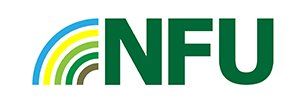Pyrolysis & gasification to produce Biochar
Pyrolysis and gasification have long been acknowledged as methods for carbon removal. Unlike processes such as decay or incineration, Pyrolysis and Gasification do not release the carbon contained in residual materials as CO2; instead, they securely bind it into biochar, effectively extracting CO2 from the atmosphere. When this biochar is permanently integrated into designated carbon storage sites, such as soil, construction materials, or asphalt, it enables the long-term retention of CO2, thus Carbon Capture and Storage.
The IPCC has recently acknowledged and endorsed this technology as a viable carbon dioxide removal (CDR) solution, creating new opportunities within the circular economy. This innovative approach is also commonly referred to as Negative Emissions Technology (NET).
The definition of Pyrolysis and carbonization refers to the controlled thermal decomposition of materials within an oxygen-depleted environment, typically within a chamber or reactor. Instead of undergoing combustion, these materials are transformed into biochar and hot gases.
After the biochar is extracted from the reactor, the hot gases are directed through a combustion chamber, where they can be used to generate synthesis gases, and the excess heat energy can be harnessed for applications such as heating, cooling, and electrical power generation.
Biochar represents a distinct approach to reducing and removing CO2, since it involves the deliberate extraction of a solid, energy-rich carbon product from the material before combustion. This prevents the released carbon from
re-entering the atmosphere.
Although Biochar primarily consists of carbon, from the structural remains of the original feedstock e.g. wood, straw, crop residues, etc; it also contains residual minerals (ash) and organic matter. In addition to sequestering carbon, biochar offers various benefits, including its significant surface area that enhances water retention and the availability of the residual minerals for plant growth when used in soils.
Carbon Focus Engineering Ltd have been working with a number of feedstock producers to provide the best solutions to reduce both their waste streams and CO2 emissions, whilst producing a valuable by product. We have been working with Pyrolysis manufactures over the last five years from across Europe to find the best technological fit for our clients needs and are currently the engineering partner in an INNOVATE UK project.



)
)
)
)
)
)




